
Arid-Land Subterranean Termite (Reticulitermes tibialis)
Invertebrates Around Las Vegas, Wildlife Around Las Vegas
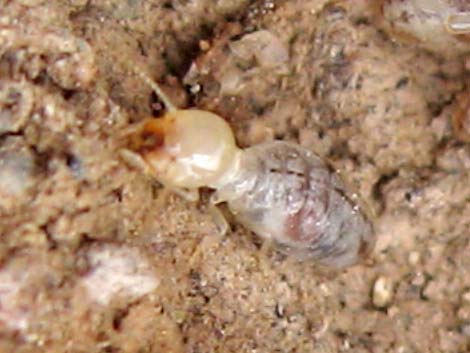 |
General: Subterranean termites, Family Rhinotermitidae (sometimes called white ants), are amazingly abundant in the desert, although we almost never see them. Subterranean termites are small, and most are white and eyeless. Like true ants, subterranean termites live underground in colonies of countless individuals. Occasionally, however, termites will come aboveground and cover dead sticks and dead shrubs with mud to form shelter tubes. They completely encrust the wood, then come up and eat it. |
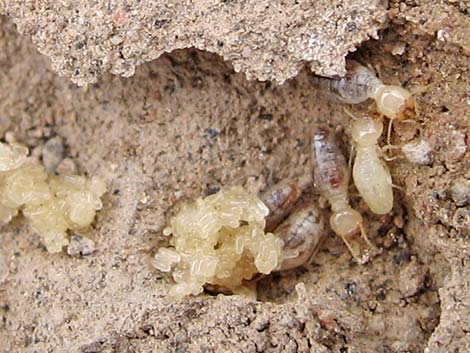 Yellow masses are eggs |
Termites live in a caste society, with different castes relegated to certain functions in the colony. For example, there are workers, soldiers, reproductive castes. Learn more about desert termites. Desert Subterranean Termite (Heterotermes aureus) make round shelter tubes. These termites occur in the Colorado and Gila deserts (southern California and Arizona). Arid-Land Subterranean Termite (Reticulitermes tibialis). These termites occur in deserts across the southwest where they eat creosote bush and greasewood, buildings, and other wooden structures. The heads of soldiers are short, broad, and yellow. |
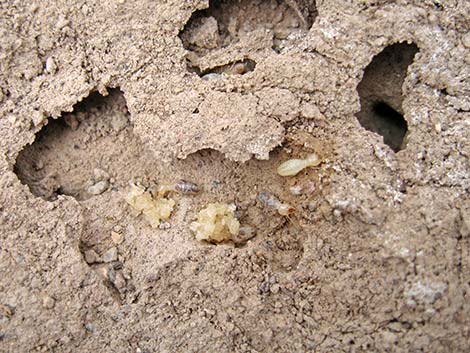 Nest chamber was covered by a flat rock |
Termites cover sticks, the stems of low-growing shrub (few inches high), and other plant-material items with mud to form shelter tubes. Shelter tubes protect the termites from direct sun, dehydration, and predators while they eat the stems. Shelter tubes are built using soil particles, saliva, and feces. Termites create underground nest chambers similar to ants where they live and raise young. The yellow masses in the photos here are eggs. |
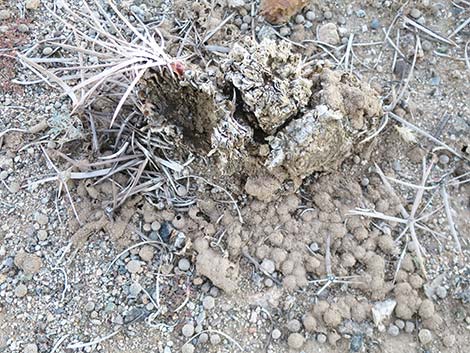 Mud-covered jackrabbit scat (shelter tubes) |
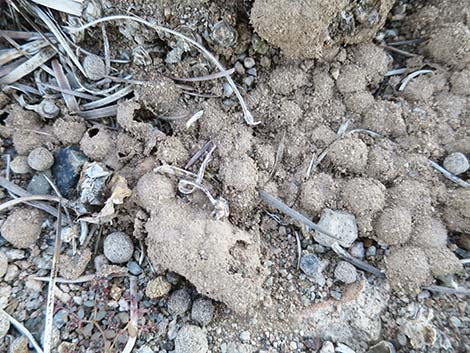 Mud-covered jackrabbit scat (shelter tubes) |
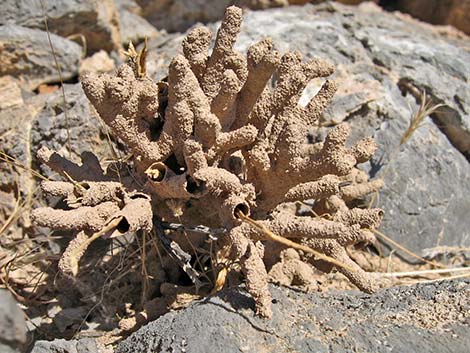 Mud-covered sticks (shelter tubes) |
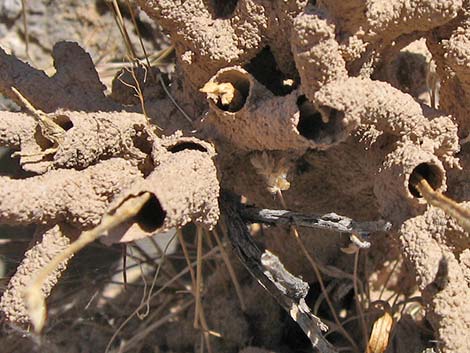 Close-up of mud-covered sticks (shelter tubes) |
Note: All distances, elevations, and other facts are approximate.
![]() ; Last updated 240218
; Last updated 240218
| Inverts Around Las Vegas | Wildlife Around Las Vegas | Glossary | Copyright, Conditions, Disclaimer | Home |